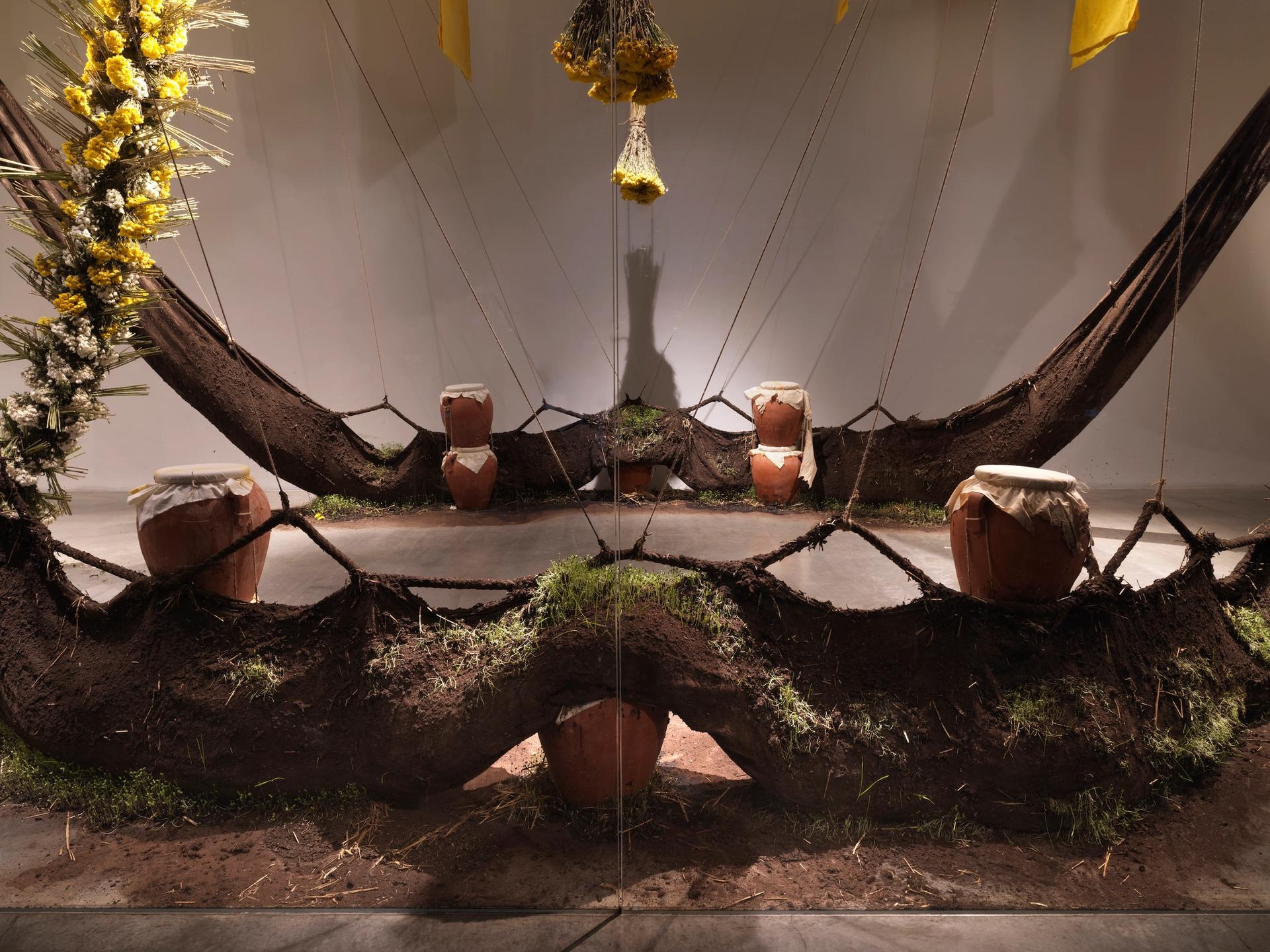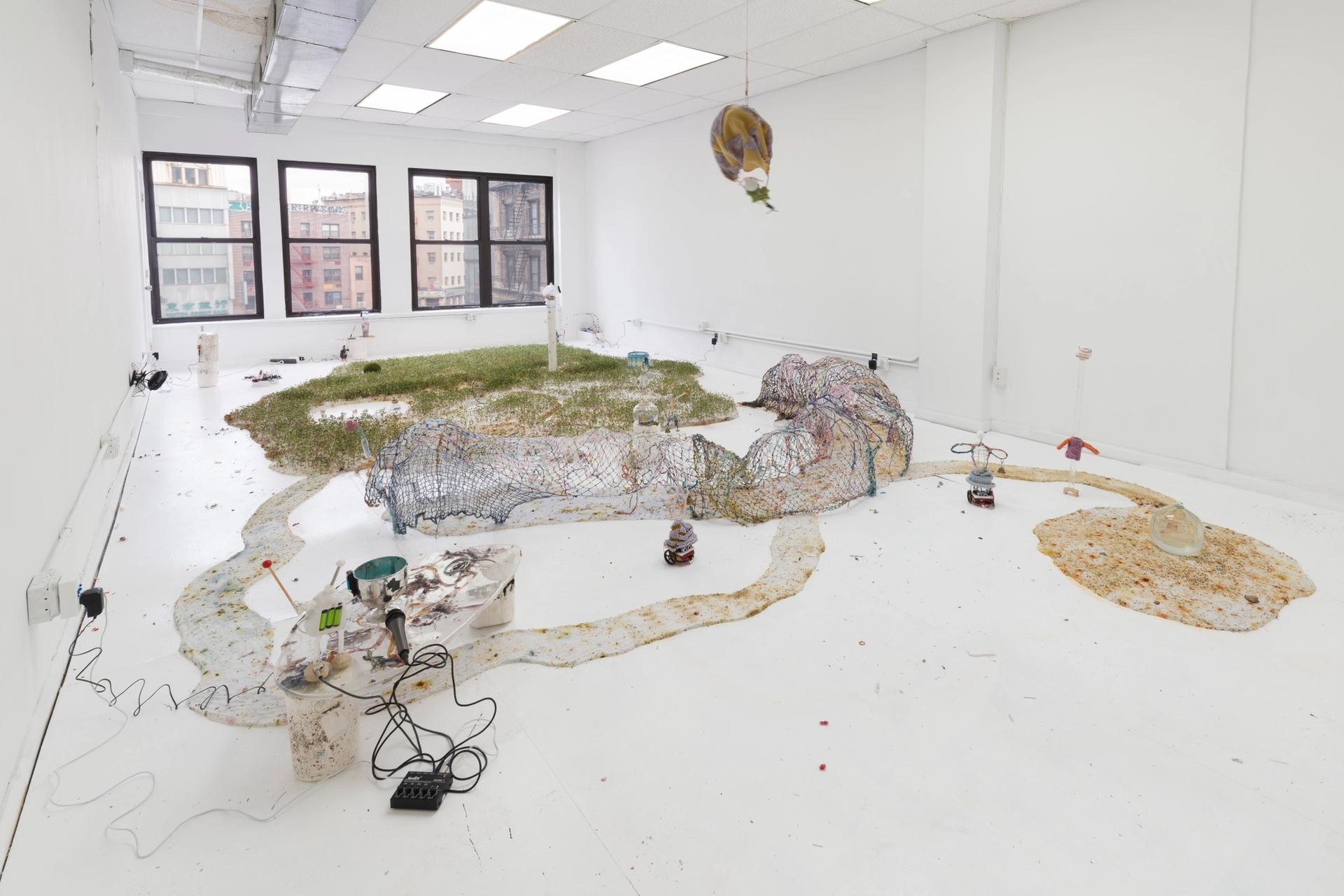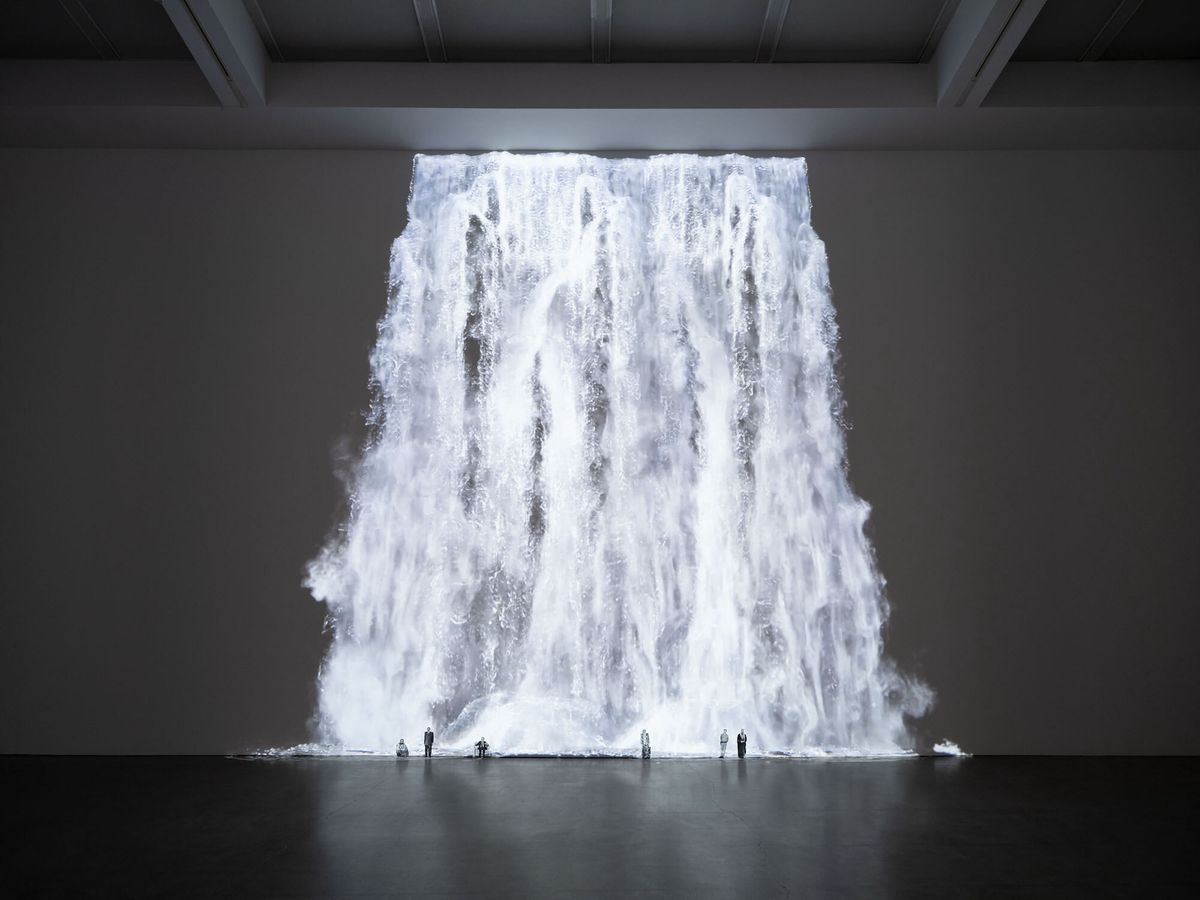Walid Raad: We Have Never Been so Populated
Until 16 April at Paula Cooper Gallery, 524 West 26th Street, Manhattan
In this moment of war horrors, mass displacement and geopolitical dogfighting, Lebanese artist Walid Raad’s ingenious work feels all the more timely. In these new works, the artist fancifully explores the many ways (real and imagined) that conflict can reshape a country, from its museums’ collections to its wildlife and landscapes. The series of works and installations on view here, many of them attributed to Raad and his fictional collective The Atlas Group, detail phenomena from a closely related parallel reality presented as if by a historian or archivist. For instance, there is the lavishly wallpapered room featuring images of the backs of paintings—purportedly the stretcher bars of John Constable paintings acquired by the Louvre Abu Dhabi (no such paintings exist)—that feature previously unseen studies of clouds. Henceforth, the wall text explains, the museum will only ever show the works with these secret skyscapes facing out, dooming the canvases’ better-known sides to obscurity. The exhibition’s most impressive (and darkly amusing) installation, at the rear of the gallery, features projected animations of three cascading waterfalls stretching from the ceiling to the floor. At the bottom of each stand tiny cut-outs of famous and infamous leaders, including Yaser Arafat, Margaret Thatcher and George H. W. Bush. Adjacent wall-text wryly explains that during the Lebanese wars, militias took to naming three of the country’s most beautiful waterfalls after the leaders of whichever countries were backing them at the moment. As allegiances and alliances shifted, the militias “simply decided to rename the waterfall again, and again, and again”. Raad’s video installations, then, show the many successive politicians for whom each waterfall was named. This pointed commentary on the fluidity of political and military allegiances hits especially close to home as, in our reality, some of the oldest alliances between nations are put to the test.

Installation view of Daniel Lie: Unnamed Entities (2022) at the New Museum, New York. Dario Lasagni.
Daniel Lie: Unnamed Entities
Until 5 June at the New Museum, 235 Bowery, Manhattan
The Indonesian-Brazilian artist Daniel Lie has enveloped the ground-floor gallery of the museum with an engrossing living installation that evokes the animism of Afro-Brazilian spiritualism and broader meditations on death, rebirth and the in-between. The durational and site-specific work comprises several jute tapestries suspended from the ceiling that are filled with ephemeral organic materials like earth, sprouted mushrooms, minerals and other fertilisers, which will grow and decompose in the coming months. The altar-like space is stiflingly humid and filled with insects. Several arrangements of dried flowers and textiles dyed with natural pigments appear to ceremoniously flank ceramic pots that symbolically contain the spirits or “unnamed entities” in the work, or the “other-than-human beings” present there, as the artist puts it. The work underscores the coexistence between what can be perceived as sentient lifeforms and the life-force of what appears static to human perception.

Installation view of Mimi Park: Dawning, Dust, Seeds, Coplees at Lubov, New York. Courtesy Lubov.
Mimi Park: Dawning: Dust, Seeds, Coplees
Until 16 April at Lubov, 5 East Broadway #402, Manhattan
Mimi Park’s installation-as-solo show is an experience in a kind of Lilliputian post-humanism. Park’s resin-and-radish sprout topography sprawls across most of the gallery space, requiring viewers to tip-toe through its contours while avoiding the junk automatons—motorised toothbrush heads, vibrating salvaged snares—which rattle aimlessly throughout. An attached back room contains an index of tools and replacement parts that the artist periodically raids to restore her machines when they falter. Park’s project is an open circuit, moving through nodes of growth, collapse, repair and transfer in its investigation of the border between the living and the inert. “It was always interesting to me what is a human's threshold of perceiving anything as living beings,” Park told The Art Newspaper. “Every single being that was presented in the room contains a flow of energy, whether generated by themselves or powered by the help of others, and they also share lists of the same chemical components.” Microplastics accrue, weeds grow, electricity moves through a body like music. At a certain point, Park’s show seems to insist, it’s all just a transference of energy.


